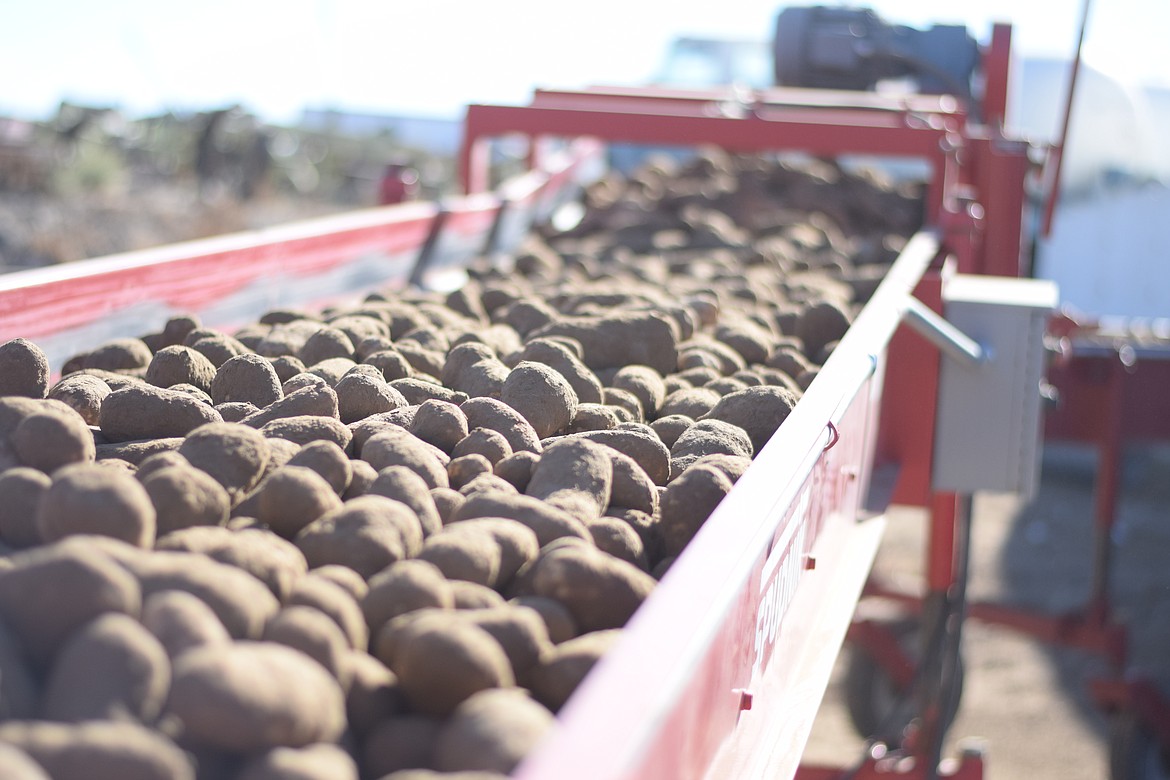Potato harvest looking up
COLUMBIA BASIN — The state of the taters is, well, pretty darn good this year.
“The potato harvest is definitely a lighter crop than what we’re historically used to,” said Dale Lathim, executive director of Potato Growers of Washington. “It’s actually a little bit better than last year in terms of yield. But it’s a lot better than last year in terms of quality.”
One reason for this, Lathim said, was the unusual weather in the Northwest earlier in the year. The unusually cool spring delayed the crop’s maturation, he explained.”
And then just when we thought the crop was going to be catching up, then we had the heat wave hit,” Lathim said. “And we lost a lot of that bulking we would normally get in August. So what we’re digging today is coming in about three to four tons less than average. It’s a little bit smaller size profile. So it will be smaller tubers, but, like I say, they are very, very high quality.”
Now that the harvest is underway, the weather is continuing to cooperate.
“The weather is being kind to us in terms of the harvest, so there’s been no setbacks so far,” said Gary Roth, executive director of the Oregon Potato Commission. “The potatoes look to be of very good quality. There appears to be a minimum amount of bruising or damage. That’s always good.”
The clement weather is the opposite of last year, when temperatures soared to over 110 degrees in the summer, resulting in overheated soil and distressed potato plants. Both yield and quality were adversely affected. Even so, Lathim stressed, 2021 was only a bad year by the Columbia Basin’s own standards.
“While last year was one of the poorer crops for the Basin, you have to keep that in perspective, because that’s still a poor crop for us is a better than average crop in most any other growing region of the world,” he said.
The market for potatoes has stabilized as well. Two years ago, when the COVID-19 pandemic was in full force and restaurants were closed, growers were giving sacks of potatoes away. But things have stabilized considerably, Lathim said.
“The frozen potato segment – which is the bulk of what we have here in the Columbia Basin, more than 80% of the potatoes go for frozen processing – that demand is very good,” Lathim said. “And because we have so much frozen processing in the Pacific Northwest and the Pacific Northwest crop as a whole is down this year, plus there’s reduced acres in Idaho, that situation looks like it’s going to be very tight, but manageable on the processing side of it. But almost all of that is under contract, and the contracts are up 20% in value at average this year, which will help.”
Rumors sprang up in August that Idaho would be experiencing a shortage of potatoes, which Lathim said is not happening. Essentially, he said, growers who would ordinarily plant extra acreage in potatoes went with other crops this year. It’s not a shortage, he explained, just not the surplus that we would see in other years.
In the long run, Lathim said, quality outweighs quantity.
“It’s a lighter crop, smaller size profile, but excellent quality,” he said. “And we’re thankful for what we have and look forward to a better year next year.”
Now though, Roth said the focus is on getting this year’s harvest completed.
“We hope good weather holds across the state and we hope everyone gets through a safe harvest,” said Roth.



